The Real Reason Decluttering Fails (and How to Finally Get it Right)
After more than a decade helping people sort out their homes, I can tell you one thing for sure: clutter isn’t really about the stuff. Not really. I’ve been in tiny apartments packed to the ceiling and sprawling homes with chaos hiding in every cabinet. The problem is always the same. It’s about postponed decisions.
In this article
- The Invisible Weight of Your Stuff
- Mistake 1: Starting Without a Destination
- Mistake 2: Buying Bins Before You Purge
- Mistake 3: Getting Derailed by Sentimental Stuff
- Mistake 4: The “Just in Case” Clutter Invasion
- Mistake #5: Decluttering Other People’s Things
- When to Call in a Pro (and What to Expect)
- Your Decluttering Go-Bag: Keep it Simple & Safe
- The Bottom Line: It’s About Your Life, Not Your Stuff
Most people who get stuck are brilliant and totally capable. They just hit a wall. They start a project with a huge burst of energy, only to find themselves three hours later, exhausted and sitting in a mess that’s even bigger than when they started. It’s a super frustrating cycle, but honestly, it’s almost always preventable.
This isn’t about learning some fancy folding technique you saw online or dropping a fortune on matching plastic bins. This is about understanding the real reasons you’re stuck and using the same practical methods the pros use to get unstuck for good. Let’s get into the nitty-gritty I share with my clients—the stuff learned from standing in hundreds of real, messy rooms with real people.
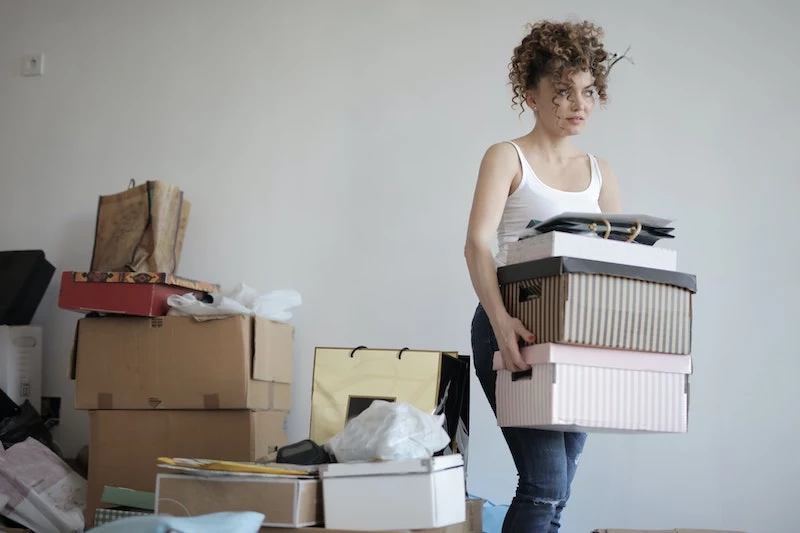
The Invisible Weight of Your Stuff
Before you even think about touching a single item, we need to talk about what you’re up against. Clutter has a very real weight, both physically and mentally.
Physically, it’s a magnet for dust, allergens, and sometimes even mold. I can often smell the stale air in a cluttered room—that heavy, dusty scent that screams nothing has moved in a while. In more serious situations, piles of paper and textiles can become a legitimate fire hazard. It’s a real safety issue.
But the mental impact? That’s even bigger. Your brain is constantly scanning and processing your surroundings. When your home is in a state of chaos, your mind sort of reflects that. It can lead to this low-grade, constant hum of stress. You can’t find your keys, you misplace an important bill, and you can’t truly relax because your eyes have nowhere to rest. And it’s not just a feeling; it’s science. Studies have shown that people living in cluttered spaces have higher levels of cortisol, the stress hormone. It’s a measurable physical response to your environment.
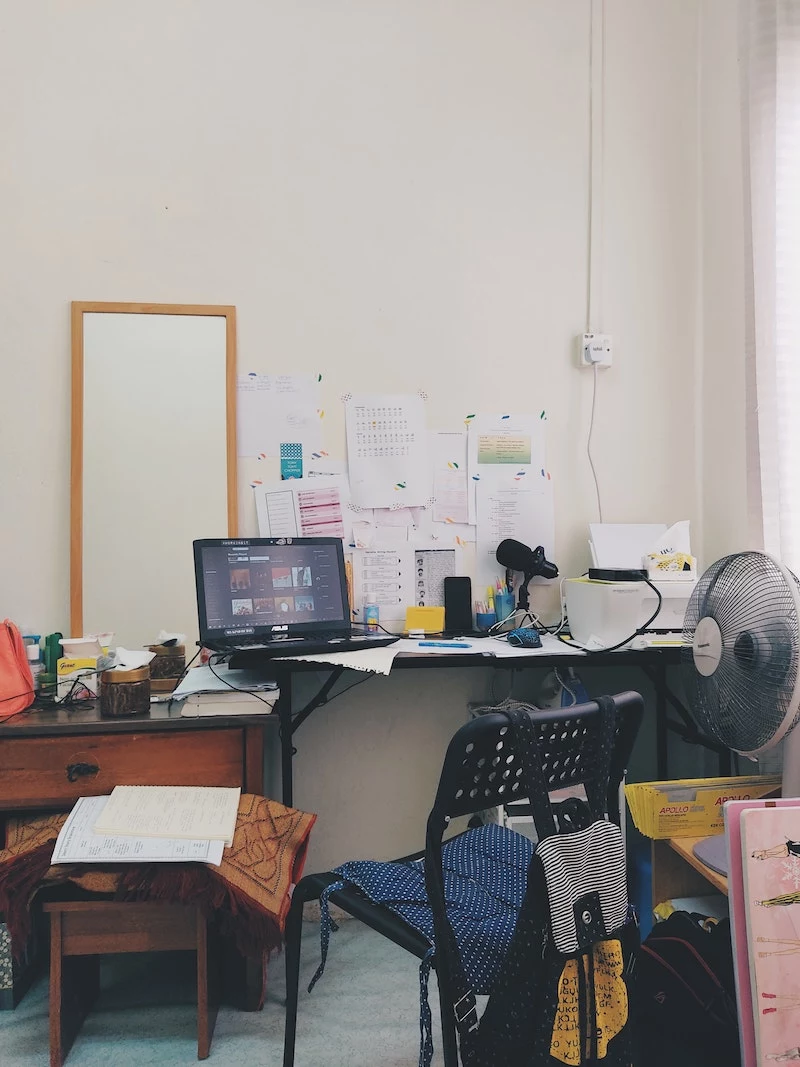
Thinking about it this way shifts your whole mindset. You’re not just “tidying up.” You are actively removing stress from your life and making your home safer and healthier. That’s a project worth doing right.
Mistake
1: Starting Without a Destination
The most common failure I see is diving in with tons of motivation but zero plan. Someone gets fed up, yanks everything out of a closet, and then just… freezes. Total overwhelm. A couple of hours later, they give up and shove it all back in, feeling defeated.
The problem wasn’t a lack of energy; it was a lack of a clear, achievable goal.
The Pro Fix: Set a Micro-Goal for a Micro-Zone
Professionals never start a project without defining the “after” picture first. What do you want this space to do for you? “To be clean” isn’t a good enough answer. A great answer sounds like, “I want to be able to use my dining table for dinner again,” or “I want to find any pan in my kitchen in less than 30 seconds.” See? Concrete. Functional.
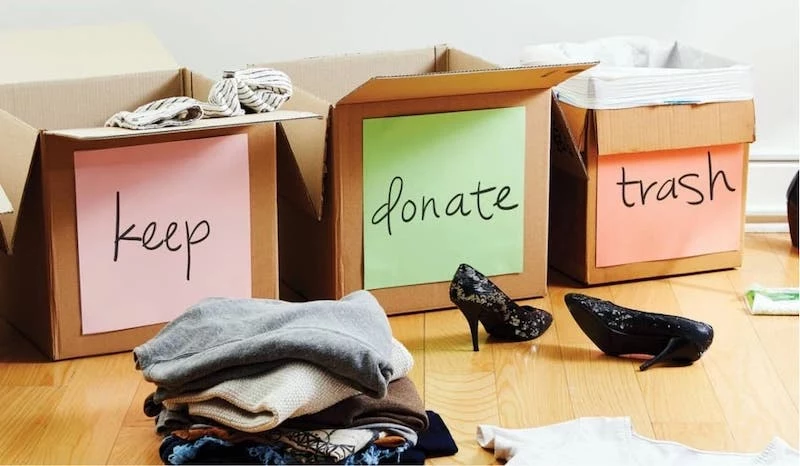
Once you have that goal, you break it down into ridiculously small zones. Never, ever try to declutter a whole house. Don’t even try to tackle a whole room at once. Here’s how you’d handle a kitchen:
- Your Goal: Make weekday breakfast prep less chaotic.
- Zone 1: The countertop where the coffee maker and toaster live.
- Zone 2: The one drawer with all the utensils.
- Zone 3: The single cabinet with coffee mugs and bowls.
Tackle ONLY Zone 1. That’s it. Set a timer for 25 minutes. Pull everything out of that zone, wipe it down, and only put back what’s essential for making breakfast. Everything else gets sorted. When the timer dings, you stop. You’ve won. You’ve made a visible improvement, and you’ll actually feel motivated to hit Zone 2 tomorrow. A whole garage might take several weekends of these focused sessions, but this is how you get it done without burnout.
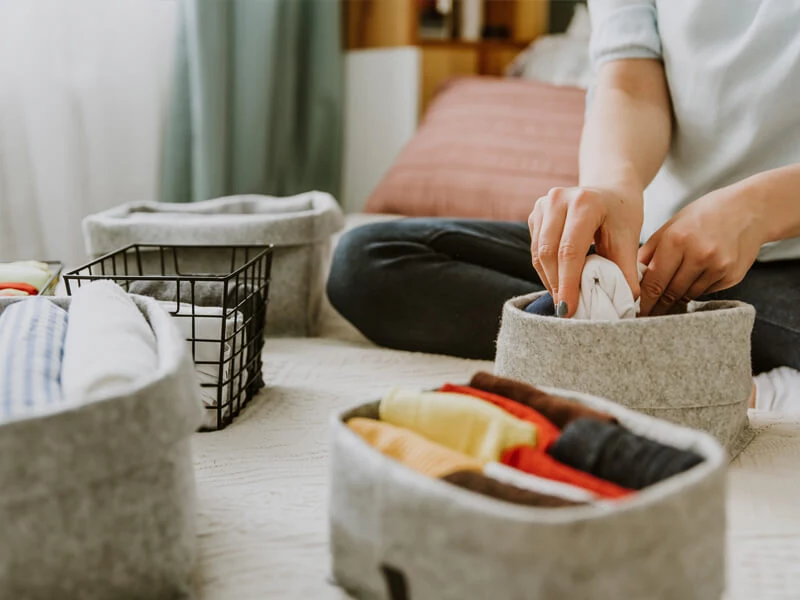
Mistake
2: Buying Bins Before You Purge
Oh, man. People love buying storage containers. It feels so productive, right? You see those perfect pantries online and think a fresh set of matching bins is the answer. It’s not. It’s a classic trap.
I’ve seen garages filled with hundreds of dollars worth of beautiful, empty containers while the house is still overflowing with clutter. You’re just getting ready to organize your clutter, not get rid of it.
The Pro Fix: The Unskippable Order of Operations
In the organizing world, we follow a strict workflow. It’s a non-negotiable process that just works.
- Empty: Take everything out of the space. The whole drawer, the entire bookshelf. You have to see the sheer volume of what you’re dealing with.
- Sort & Purge: Group like with like. All batteries in one pile, all pens in another. This is the moment you realize you own seven pairs of scissors. Now, make the hard calls: Keep, Donate/Recycle, or Trash.
- Clean: With the space completely empty, give it the best cleaning of its life. You’ll never have a better opportunity.
- Contain: Now—and only now—do you put the ‘Keep’ items back. And only now do you assess if you even need a container. You might find you have plenty of room, or that an old shoebox works perfectly fine.
Quick Tip: Your ‘Donate’ pile has more potential than just one drop-off. Animal shelters are often desperate for old towels and blankets. A local women’s shelter might need gently used professional clothing. Your old, duplicate tools? See if there’s a “tool library” or a community theater group nearby that could use them. Think creatively!

Mistake
3: Getting Derailed by Sentimental Stuff
This is the tough one. That old concert t-shirt isn’t just fabric; it’s a perfect memory. That chipped mug isn’t just a dish; it was a gift. This is where progress grinds to a halt and people give up, buried in guilt.
Your home should be a living, breathing space that serves you today, not a dusty museum of your past. The goal is to curate your most precious memories, not to be held captive by them.
The Pro Fix: Curate, Digitize, and Re-home
- The Memory Box Rule: Limit yourself to one or two high-quality, weatherproof boxes. You can grab archival-safe ones online for about $20-$40. This physical limit forces you to be a curator. You have to choose the best items, which are far more powerful than a dozen boxes of forgotten stuff.
- Photograph It: For bulky items you love but just don’t have room for, take a great picture. Create a digital album or even a little photo book titled “Things I Love.” You keep the memory in a beautiful, accessible format without sacrificing your living space.
- Ask a Tie-Breaker Question: Stuck between two similar items, like your grandma’s teacups? Ask yourself: Which one sparks a more vivid, happy memory? Which one would I actually use, even just once a year, to honor her? The answer usually becomes clear.

Mistake
4: The “Just in Case” Clutter Invasion
The “just in case” category is probably responsible for half the clutter in the average home. These are all the things you don’t use or particularly love, but you’re afraid to let go of. What if you need it someday?! This thinking comes from a place of scarcity, and we can beat it with simple logic.
The Pro Fix: A Few Simple, Logical Rules
- The 12-Month Rule: Barring highly seasonal items (like holiday decor), if you haven’t used it in the last year, your life has demonstrated that you don’t need it.
- The 20/20 Rule: This one is a game-changer. If you can replace an item for less than $20 and in less than 20 minutes (a quick trip to a local store or an online order), you have permission to let it go. This covers so many things like random cables, office supplies, and kitchen gadgets. From my own experience, I once held onto a specific adapter cable for five years, thinking I’d need it. When I finally did, the technology was obsolete anyway. I could have bought the right one for $12 online in two minutes. Don’t be like me!
- The Container Rule: Give a category a specific, limited home. For example, all your batteries must fit in one small, sectioned box. When it’s full, you can’t buy new ones until you use/dispose of the old ones. This works wonders for craft supplies, hardware, and charging cords.
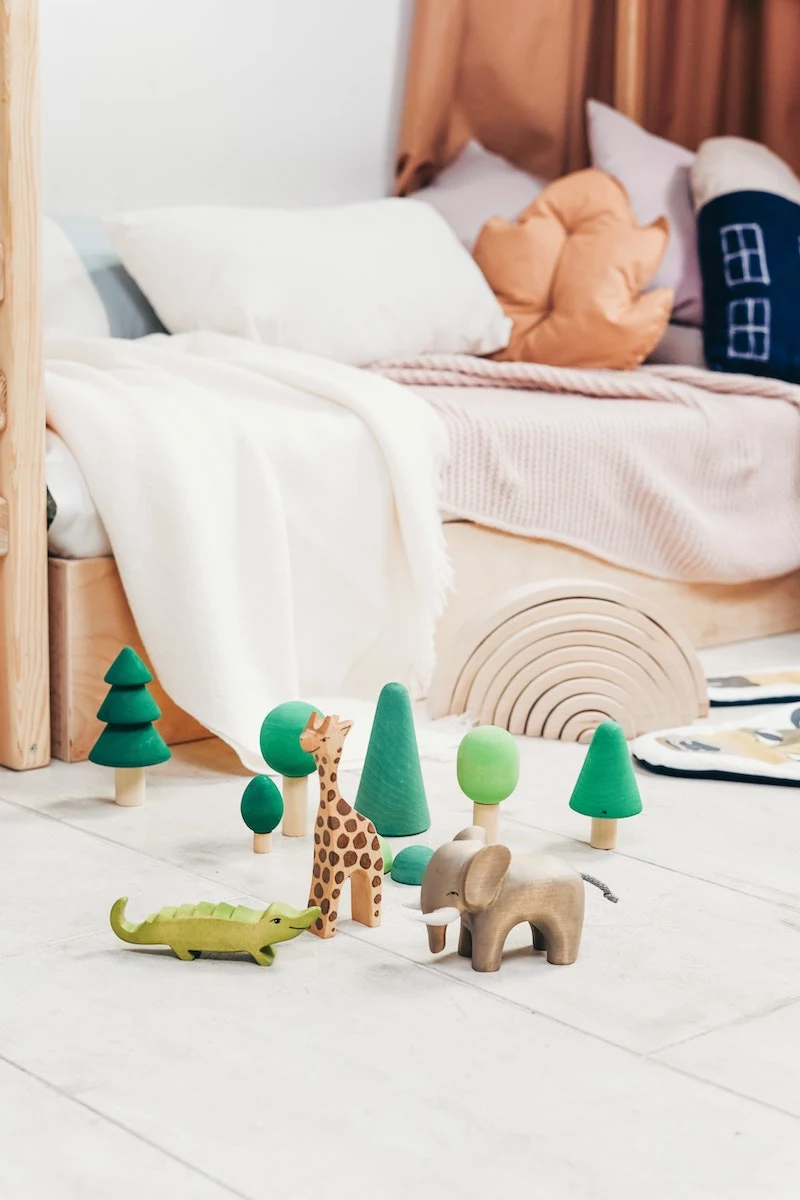
Mistake #5: Decluttering Other People’s Things
Heads up! This is a major boundary, and it’s a source of so much household conflict. You simply cannot and should not declutter someone else’s belongings without their full, enthusiastic consent. It doesn’t matter if it’s your spouse, roommate, or teenager.
Discarding their things without permission breaks trust and can cause serious relationship damage. What looks like a pile of junk to you could be a project-in-progress to them.
The Pro Fix: Boundaries and Teamwork
Forget secret purges. The real solution is communication.
- Define Common Zones: The living room, kitchen counters, and entryway are shared spaces. Agree together on a baseline level of tidiness. For example: “By 9 p.m. each night, the coffee table is cleared of personal items.”
- Respect Personal Zones: Let each person have a space that is 100% their own—a home office, one side of the closet, a few drawers. In that zone, their stuff rules. This gives everyone autonomy.
- For Kids: Don’t just toss their toys while they sleep. Involve them! Frame it as making room for new things or helping other kids. Say, “Your toy box is full! To make space for your birthday presents, let’s pick out some toys you’ve outgrown to give to children who don’t have as many.” It teaches them about limits and generosity.
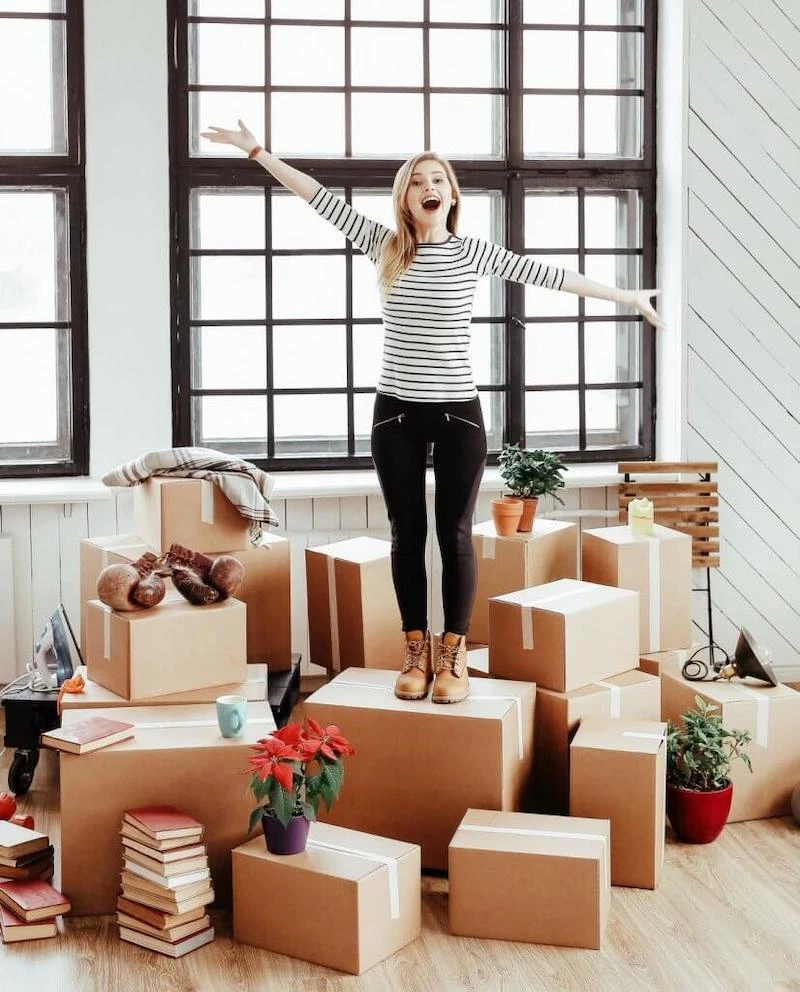
When to Call in a Pro (and What to Expect)
Sometimes, the clutter is a symptom of something bigger. If you’ve tried and failed multiple times, or you’re facing a huge project like downsizing or clearing a relative’s estate, an organizer can be a lifesaver. We provide the structure, accountability, and physical help to get you over the finish line.
To give you a ballpark, hiring a professional organizer can range from about $50 to over $150 an hour, depending on your location and their experience. Think of it as an investment in your well-being and sanity—it can save you weeks of stress and frustration.
Good to know: If the situation involves a compulsive need to acquire things and a true inability to discard them (a condition often referred to as hoarding), the best approach involves a team, often including a mental health professional. A certified organizer is trained to recognize when their skills are not enough and will recommend the right kind of help.
Your Decluttering Go-Bag: Keep it Simple & Safe
Before you start, gather a few basics. This isn’t about fancy gear; it’s about being safe and efficient.
Safety First!
I cannot stress this enough. When you start digging into areas that have been ignored for a while, you don’t know what you’ll find. I’ve found everything from wasp nests to evidence of rodents.
- Get Protected: Always wear gloves, a good dust mask (an N95 is worth it), and sturdy, closed-toe shoes.
- Label Your Bins: Have boxes or heavy-duty contractor bags (around $15 for a box, and they won’t rip!) clearly labeled: Donate, Trash, Recycle, and Relocate.
- Heads Up on the ‘Relocate’ Bin: This one is a trap! It’s for things that belong in another room. The rule is you must empty this box and put everything in its proper home before you are done for the day. Otherwise, you’ve just moved the clutter from one pile to another.
- Labeling Gear: You can get a decent label maker for $25-$40, or just use a roll of masking tape and a sharpie for $3!
The Bottom Line: It’s About Your Life, Not Your Stuff
Let’s be real, clearing clutter is tough work. But the payoff is so much more than a clean house. It’s a clear mind. It’s having more time and energy for the people and things you actually love. It’s a home that supports the life you want to live now.
Be patient with yourself. Start small. And celebrate every single win, no matter how tiny.
Your challenge for today: Don’t even get up. Grab your purse or wallet, dump it on a clear surface, and spend five minutes cleaning it out. Toss old receipts, consolidate loose change, and get rid of expired cards. It’s a five-minute win that will make you feel amazing. You can do this.










